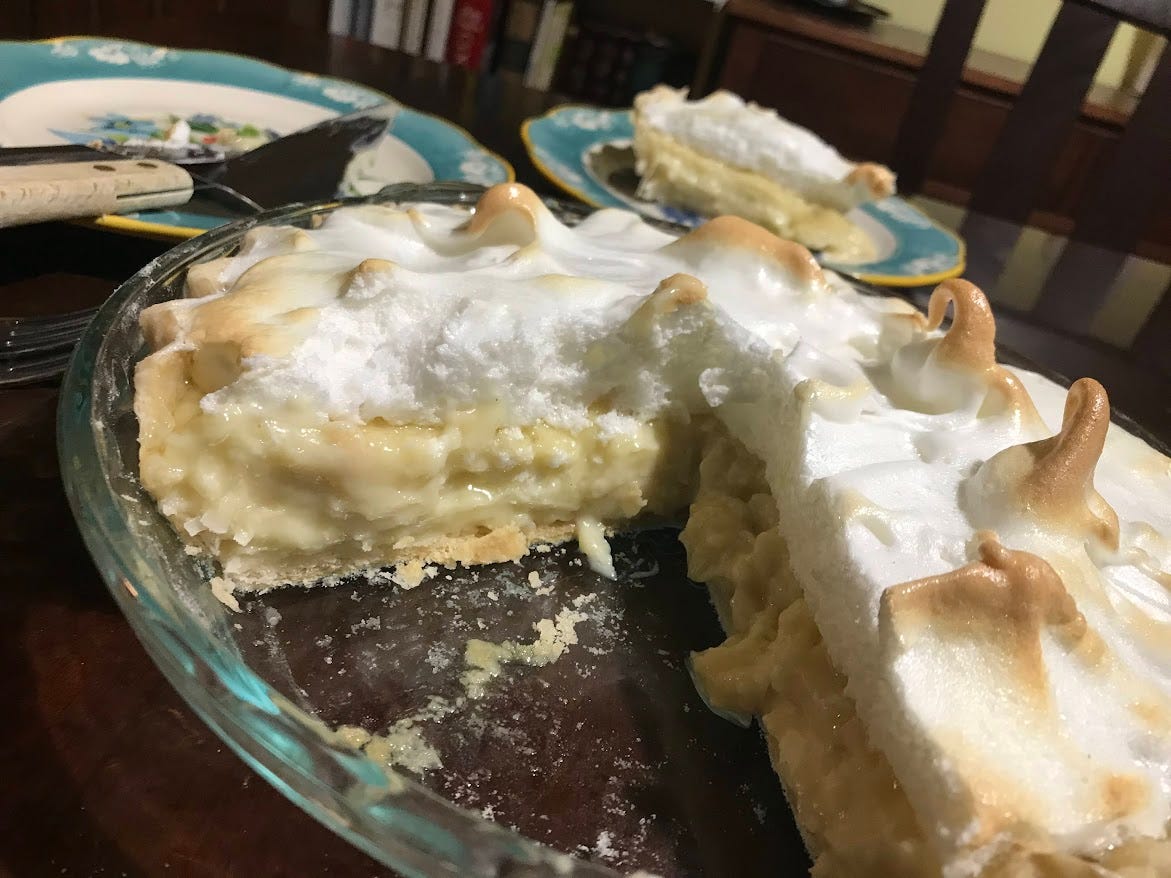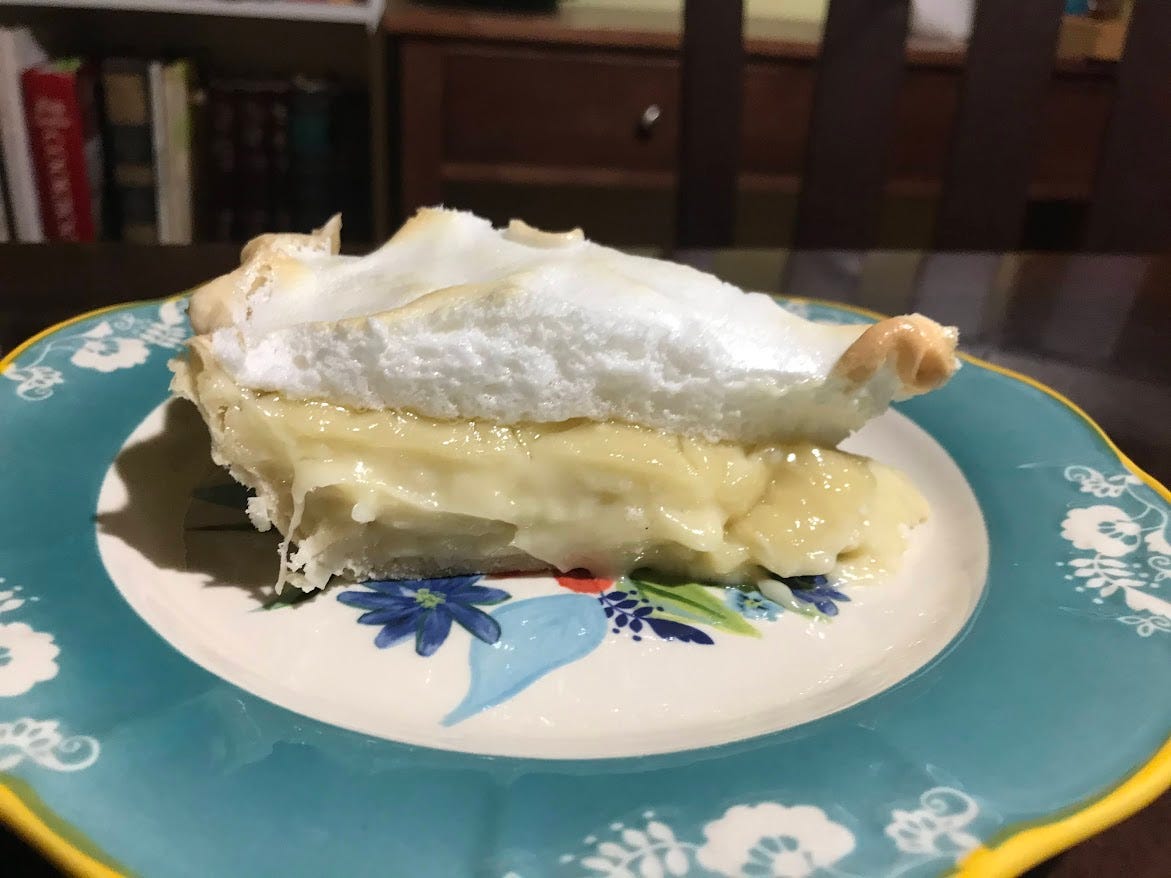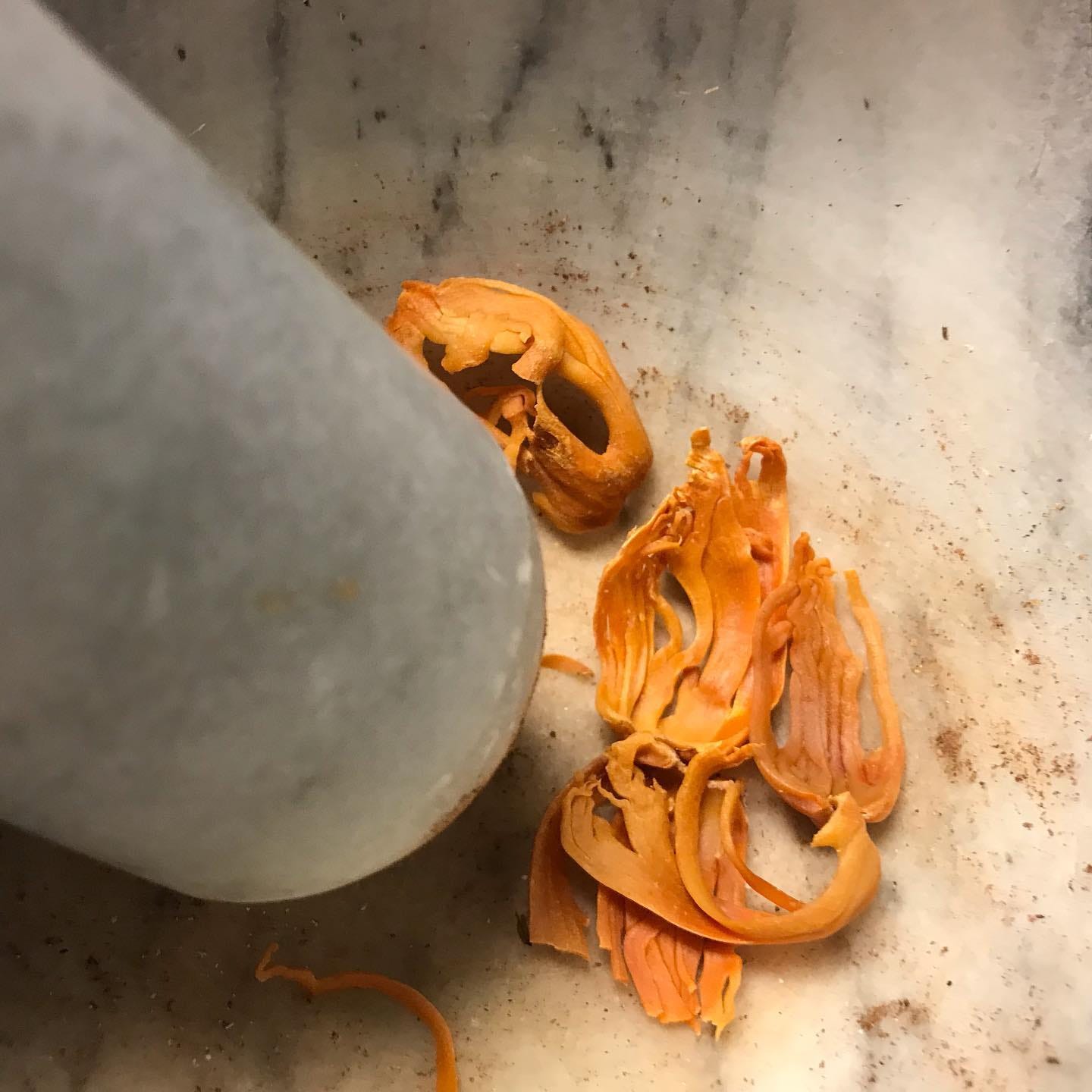Coconut Cream Pie
The First Reader loves coconut cream pies, and over the years I've blogged the recipe I usually make for him, which calls for fortifying a boxed cook-and-serve pudding. It's an easy way to do it, but a few years ago it started to be hard to find the pudding mixes. I would buy half a dozen when I saw them. Then, several months ago, when we moved into our new home, I ran out of the last of my stash... and couldn't find any more. It wasn't a big deal, I've been too busy to cook much (I'm sure you've all noticed that) and besides, I could make it from scratch!
Yesterday, I finally got around to working up a new recipe for his pie. From the look on his face when he took the first bite, I think I nailed what I was going for. This pudding filling is decadently rich, and I've punched the coconut flavor up a few notches. By adding in a pinch of mace, there's a hint of spice warming it even more, with the vanilla and black pepper notes of the mace coming in under that strong melody to deepen the overall flavors. Best of all, while it's not a fast dessert, it's really not that complicated to make up.
Start out with a blind baked deep-dish pie crust. You can use the pie crust recipe from my Apple Pie recipe. Take half of it, roll it out and line your pie shell. Using weights, or simply pricking the crust all the way around the edge and across the bottom with a fork, bake the crust at 400F for about 10-12 minutes until faintly golden and crisp. Set aside to cool while preparing the pudding filling.

Coconut Cream Pudding
Separate:
3 large eggs
Reserve the whites aside to come to room temperature for meringue, and whisk the yolks in a small bowl, keeping them near the stove for when they are needed.
In a large saucepan, whisk together:
3/4 c sugar
3/4 c flour
1/8 tsp ground mace
Then whisk in:
15 oz (1 can) coconut milk
1/2 c cream
1/2 c milk (or 1 c half and half if you have that)
Begin to heat over medium heat. When the mixture begins to thicken, take a large spoonful of it (roughly a quarter of a cup) and drizzle it into the egg yolks while whisking to temper them. Then add the yolks into the pudding, stirring continuously to prevent sticking and burning at this point.
Cook until bubbles pop and leave a crater, the pudding will be very thick. Remove from heat.
Stir in:
3 tbsp butter (chilled is good, helps bring the temp down a bit)
1 tsp vanilla extract
1 c unsweetened coconut flakes
Pour this into your baked pie shell.
In a stand mixer, or with a hand mixer, beat the three egg whites until frothy, then slowly add in
1/4 c sugar
Continuing to beat until your meringue forms stiff peaks.
Spoon over the pie filling, spreading out to touch all edges of the shell. You can form peaks by tapping with a spoon and then pulling it back up quickly. Takes a bit of practice but it's fun!
Bake the meringue at 350 for about 10 minutes, until the peaks are a nice golden color. Keep an eye on it, they can go from lovely to burnt very quickly.
Cool the pie on a rack for a couple of hours. We wound up eating it about three hours after it came out, and it was still just slightly warm in the center. Which makes for messy slices as it's not fully set firm, but oh the flavor while it's still warm is just perfection, so give up the pretty and enjoy that fragrant pie!

Why Mace?
Mace is a forgotten spice in the American kitchen. I both understand it's absence, and don't. So I'm going to start adding it to more recipes, because when I started to look into what makes Mace (the aril, or soft fleshy wrapping around the nutmeg seed of Myristica fragrans) different than Nutmeg, I realized that when we decided to keep the one, we left the more complex spice out. Mace is dried, then ground, and like all spices, loses something if it's been ground and stored for some time. That's easy enough to work around, you can inexpensively pick up whole mace on Amazon (yes, that's an affiliate link which helps support my blog) and grind it for use.
Mace has more aromatic compounds present than nutmeg, so if you're going to pick just one, go with mace! You'll be rewarded with the familiar nutmeg flavor, and an added note of black pepper, pine, and a hint of almost-vanilla sweetness. I see it in recipes in small amounts, usually, and it's difficult to determine if this is for flavor or expense that it's kept low. I can say that in this pudding, it's a really faint accent, and you could easily double it without it being overwhelming.





